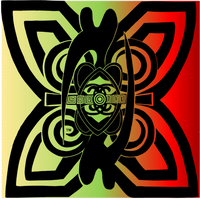Organic Tea Info
Black tea is roll broken after withering, there is no steaming as the enzymes need to remain active. (Withering is moisture evaporating from the leaf.) Roll breaking cracks the surface of the leaf exposing the leaf's enzymes to oxygen initiating oxidation. Oxidation is the process that results in the flavor profiles of Oolong & Black tea. After FULL oxidation occurs, the leaf is then finished with forced hot air.
Masala Chai
A very traditional Indian beverage, Masala Chai literally means Mixed Spice Tea. There is no universal Chai recipe. The beverage varies from region to region and even from family to family, each guarding their own recipe which is often passed down from generation to generation.
Masala = Mixed Spice & Chai = Tea
A traditional Indian beverage made with steamed milk & sweetened to taste.
For a quick & simply Masala Chai variation, pour 1/2 cup of boiling water over 1 tsp of Chai; let steep 5 mins, then add 1/2 cup of hot milk or condensed milk for greater sweetness. Strain leaves & spices before drinking.
Another suggestion is to prepare a mixture of half Chai (tea) & half milk & then steam like a cappuccino; at home a small hand-held frother is perfect for Chai!
For an authentic Masala Chai, simmer 1 tsp of Chai with 1/2 cup milk & honey on stovetop. Gradually add 1/2 cup water. Strain leaves & spices before drinking.
Pouring over ice makes delicious Iced Chai!
This versatile tea can also be prepared as a self-drinker. Plain hot Chai is made like any black tea (steep 5 minutes) or green tea (steep up to 3 minutes). May be enjoyed without adding milk.
Green Tea
Green Tea leaves are harvested from the Camellia sinensis plant and are then quickly heated—by pan firing or steaming—and dried to prevent too much oxidation from occurring that would turn the green leaves brown and alter their fresh-picked flavor. A brewed green tea is typically green, yellow or light brown in color, and its flavor profile can range from grass-like and toasted (pan fired) to vegetal, sweet and seaweed-like (steamed). If brewed correctly, most green tea should be quite light in color and only mildly astringent.
Oolong Tea
Oolong Tea ( pronunciation: /uːlɒŋ/) is a traditional Chinese tea (Camellia sinensis) produced through a unique process including withering the plant under the strong sun and oxidation before curling and twisting. Most oolong teas, especially those of fine quality, involve unique tea plant cultivars that are exclusively used for particular varieties. The degree of oxidation can range from 8 to 85%, depending on the variety and production style.
Rooibos
Rooibos ( roy-bos; Afrikaans pronunciation: [rɔːibɔs], meaning "red bush"; scientific name Aspalathus linearis) is a broom-like member of the legume family of plants growing in South Africa fynbos. The generic name comes from the plant Calicotome villosa, aspalathos in Greek. This plant has very similar growth and flowers to the rooibos plant. The specific name linearis comes from the plant's linear growing structure and needle-like leaves. The leaves are used to make an herbal tea called rooibos or bush tea (especially in Southern Africa) or sometimes redbush tea(especially in Great Britain). The product has been popular in Southern Africa for generations and is now consumed in many countries. In South Africa, it is common to prepare rooibos tea in the same manner as black tea and add milk and sugar to taste. Other methods include a slice of lemon and using honey instead of sugar to sweeten.
TISANES
TISANES are not TEA (Camellia Sinensis). The Tisane category is comprised of anything that is NOT Camellia Sinensis that is steeped in boiled or heated water in order to create a beverage. This category includes botanicals such as HERBS, SPICES, FRUIT, FLORALS, ROOT & BARK. Most Tisanes are CAFFEINE FREE, that is NO CAFFEINE - NATURALLY!

